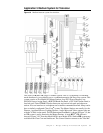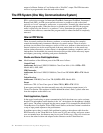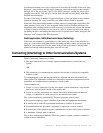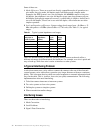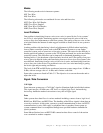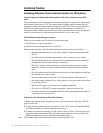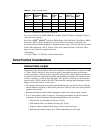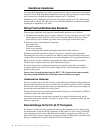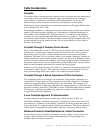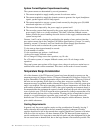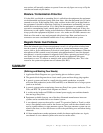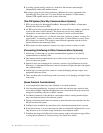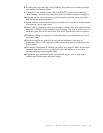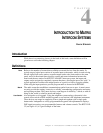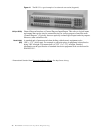
Chapter 3 - Design of Party-Line Intercom Systems 39
Cable Considerations
Crosstalk
Use shielded cable to interconnect user stations in areas of possible electrical interference,
(areas such as those near: digital equipment, high current primary power conductors
“power outlets”, transformers, transmitters, and lighting dimmers. Do not run TW
Intercom System cables along the same ductways and pathways as these cables.
Standard wire size for the an intercom system interconnection is #22 gauge shielded cable,
such as Belden 8761, 8723, 9406.
In permanent installations, to reduce both capacitive and resistive crosstalk and to afford a
degree of RF and electrostatic shielding use a cable that has a shielded twisted pair for
each channel, such as Belden 8723. Each pair consists of a conductor for the channel, a
conductor for circuit ground return and shield around the two conductors. The shield is
accessed via a drain conductor. This drain conductor and the shield can augment the circuit
grounds and thus lower the ground resistance. Do not tie the shield to chassis, earth, or
connector shell ground.
Crosstalk Through A Common Circuit Ground
Since, in the unbalanced version of a TW intercom, all channels share a common circuit
ground return, crosstalk due to common ground resistance can occur. This crosstalk is
proportional to the ratio of the common ground resistance to the system terminating
impedance, 200 ohms. This occurs when a talker on one channel is heard by a listener on
another channel due to the common ground resistance (see Figure 8-4). Reduction of this
crosstalk can be accomplished by reduction of the circuit ground resistance. Reduction of
the ground resistance can occur as a side benefit of using shielded cable, since the shield
drains can be tied together and electrically parallel the circuit ground.
Another way of lowering this kind of crosstalk is to “homerun” all interconnecting cables
to a central or “home” location. This causes the common circuit ground path to be very
short, and other things being equal, makes a low common ground resistance.
Crosstalk Through A Mutual Capacitance Of Two Conductors
Two conductors such as a twisted pair can accumulate a large mutual capacitance over
long distances. Using a figure of 100 picofarads per meter and a distance of 1 kilometer,
results in a total capacitance of 100 nanofarads or 0.1 microfarad. The reactance of 0.1
microfarad at 800 hertz is 2000 ohms. Referred to the system impedance of 200 ohms, the
apparent crosstalk is about 20 log (200/2000) or about -20 dB. Separating the two channel
conductors by a shield greatly reduces the capacitive crosstalk, so that the resistive
crosstalk discussed above dominates.
A Low Crosstalk Approach To Interconnection
To reduce capacitive and resistive crosstalk and to afford a degree of “RF” and
electrostatic shielding, a shielded, twisted pair per channel type cable can be used. Each
pair consists of a conductor for the channel, a conductor for circuit ground return and, of
course, the shield as a conductor and the shield drain conductors. These drain conductors
and the shield can augment the circuit grounds and, thus, lower the ground resistance.
Distances/Conductor Sizes/Distributed vs. Central Connection
Systems that stretch over distances of kilometers are more subject to power losses and
crosstalk. These problems can be minimized through the use of large enough wire,
shielded cables and central connections.



